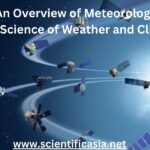Introduction: The Urgency of Understanding Short-Term Climate Change
We’ve all noticed it, haven’t we? The weather’s just…off. Summers scorch earlier, winters drag on, and those “hundred-year storms” seem to be happening every other year. It’s unsettling, and it’s not just our imaginations. These unpredictable swings, these more intense droughts, and fiercer storms are telltale signs of short-term climate change—temporary shifts in our climate patterns. But what factors cause these unsettling changes? Short-term climate change is driven by a complex mix of forces, both natural and human-caused, that play out over years and decades. These include everything from variations in solar activity and volcanic eruptions to the buildup of greenhouse gases from human activity. Understanding these shorter-term changes, and crucially, the specific factors behind them, isn’t some abstract, scientific exercise. It’s deeply personal. It’s about knowing what to expect next season so our crops don’t fail, it’s about preparing for the next big flood or wildfire, and it’s about building stronger, more resilient communities.
Which Factors Cause Short-Term Climate Change?
Short-term climate change is driven by a combination of natural and human-induced factors. While natural events such as volcanic eruptions and oceanic oscillations have historically influenced the climate, human activities in recent centuries have increasingly played a significant role. The following are the primary factors contributing to short-term climate variations:
Natural Drivers of Short-Term Climate Change
Solar Activity:
Solar radiation is a primary driver of Earth’s climate, and variations in solar output can cause short-term climate fluctuations. The Sun undergoes cycles of increased and decreased activity, known as the solar cycle, which typically spans 11 years. During periods of high solar activity, an increased number of sunspots and solar flares release more energy, leading to temporary warming of the Earth’s surface. Conversely, during periods of low solar activity, the Earth’s climate can experience slight cooling. Changes in solar radiation caused by the Sun’s natural cycles can affect Earth’s temperature on short timescales and even lead to extreme weather events. For example, the “Maunder Minimum” (1645-1715) was a period of significantly reduced sunspot activity associated with the “Little Ice Age,” during which Europe and North America experienced colder winters.
Volcanic Activity:
Volcanic eruptions can have a substantial short-term cooling effect on the Earth’s climate. When a volcano erupts, it releases vast quantities of ash, dust, and sulfur dioxide (SO₂) into the atmosphere. These particles can form sulfate aerosols that reflect sunlight into space, reducing global temperatures. This cooling effect typically only lasts for a few years. The 1815 eruption of Mount Tambora in Indonesia, which led to the “Year Without a Summer,” caused significant agricultural and economic impacts. The 1991 eruption of Mount Pinatubo lowered global surface temperatures by about 0.5°C for a few years.
Ocean Currents:
Oceans play a critical role in regulating Earth’s climate by redistributing heat. Changes in ocean circulation patterns, such as the El Niño-Southern Oscillation (ENSO), can drive short-term climate variability. El Niño is a warming of the central and eastern Pacific Ocean that disrupts normal weather patterns, causing droughts in some regions and heavy rainfall in others. La Niña, the opposite phase, is characterized by cooler-than-average ocean temperatures in the Pacific, leading to stronger trade winds and altered precipitation patterns. These periodic changes in the Pacific Ocean’s circulation result in altered weather patterns and can lead to extremes in temperature and precipitation in various regions worldwide. These oceanic oscillations can significantly impact weather conditions across the globe, affecting agriculture, fisheries, and disaster preparedness.
The Hidden Dangers of Ocean Pollution: How It Puts Maritime Workers at Risk
Human-Induced (Anthropogenic) Factors in Short-Term Climate Change
Greenhouse Gas Emissions:
Human activities, particularly the burning of fossil fuels for energy, transportation, and industry, release large amounts of greenhouse gases (GHGs) into the atmosphere. The industrial revolution notably increased the production of GHGs as human activities, such as burning fossil fuels for energy, agriculture, and deforestation, intensified. Key greenhouse gases include:
- Carbon Dioxide (CO₂): Primarily from burning coal, oil, and natural gas for energy.
- Methane (CH₄): Emitted from agriculture (especially livestock), landfills, and oil and gas extraction.
- Nitrous Oxide (N₂O): Released from agricultural fertilizers and industrial processes. These gases trap heat in the Earth’s atmosphere, contributing to short-term climate fluctuations and amplifying natural climate variability.
Land-Use Changes:
Human land-use changes, such as deforestation and urbanization, can alter local and global climate patterns. Removing forests increases CO2 levels in the atmosphere as trees are felled and no longer absorb carbon dioxide. Building cities leads to the urban heat island effect, with human-made structures absorbing and radiating more heat than natural landscapes. These land-use changes can exacerbate the effects of climate change by altering precipitation patterns and increasing the frequency of extreme weather events.
Industrial and Transportation Activities:
Industries and transportation systems that rely on fossil fuels contribute significantly to short-term climate fluctuations. The burning of coal, oil, and natural gas for electricity and transportation releases GHGs and aerosols, which can influence atmospheric temperatures. Industrial activities also release particulate matter that can affect cloud formation and precipitation patterns. The production of cement, steel, and plastics generates substantial greenhouse gas emissions. Cars, trucks, ships, and planes emit GHGs from burning fossil fuels like petrol or diesel.
Agriculture:
Agricultural activities contribute to short-term climate change through:
- Livestock Farming: Produces methane through enteric fermentation (digestion process in ruminants).
- Fertilizer Use: Increases nitrous oxide emissions, a potent greenhouse gas.
- Deforestation for Farming: Reduces carbon sequestration capacity, increasing CO₂ levels.
Studying and Monitoring Short-term Climate Change
Climate Models:
Climate scientists use sophisticated models to simulate and predict short-term climate variations. These models incorporate data on greenhouse gas emissions, solar activity, volcanic eruptions, and oceanic oscillations to assess potential future climate conditions. Factors such as atmospheric carbon dioxide levels, oceanic circulation, and solar radiation are considered when creating these models. Data from sources like satellites, tree rings, and ice cores help to enhance the accuracy of these models and provide insight into past climate patterns.
Data Collection Methods:
To understand short-term climate change, scientists rely on various data collection methods, including:
- Satellites: Monitor temperature changes, cloud cover, and atmospheric composition. Remote sensing devices orbiting Earth collect valuable data, including atmospheric carbon dioxide levels and temperature measurements.
- Weather Stations: Collect real-time data on temperature, precipitation, and wind patterns.
- Ice Cores: Provide historical climate data by analyzing trapped air bubbles in polar ice sheets. Ice sheets in Greenland and Antarctica preserve a record of climate data stretching back hundreds of thousands of years.
- Tree rings: Studying the growth patterns of tree rings allows scientists to understand climatic conditions in the past.
Key Organizations and Research:
Several international organizations play a crucial role in studying short-term climate change:
- Intergovernmental Panel on Climate Change (IPCC): Assesses scientific research and provides policy recommendations. The IPCC is a United Nations body responsible for assessing the science related to climate change.
- NASA: Conducts climate research using satellite data and global monitoring systems. NASA plays a significant role in climate science by contributing to international climate research initiatives.
- National Oceanic and Atmospheric Administration (NOAA): Monitors oceanic and atmospheric conditions related to climate change.
The Interconnectedness of Natural and Human Factors
Short-term climate change is influenced by both natural and human-induced factors, often interacting in complex ways. For instance, deforestation can exacerbate drought conditions caused by El Niño events, while industrial emissions can amplify natural temperature fluctuations.
Conclusion: Looking Ahead
So, where do we go from here? We know the climate’s changing, and we’re starting to get a handle on why. Understanding the mix of natural and human-caused factors—from sunspots to greenhouse gases—is the key. It’s not just about abstract science; it’s about protecting our communities. If we can figure out what’s driving these short-term swings, we can do a better job of preparing for droughts, floods, and whatever else Mother Nature throws our way. It’s a big challenge, no doubt, but with continued research and everyone working together, we can build a more resilient future.
Which Type of Pollution Includes CFCs and Smog?
How Light Pollution is Harming Human Health
What is Earth and Space Science?
FAQ’s
What is short-term climate change?
A: Short-term climate change refers to temporary fluctuations in climate patterns that occur over years or decades, distinct from long-term climate trends that span centuries. These variations can significantly impact weather, agriculture, and disaster preparedness.
Q: How is short-term climate change different from long-term climate change?
A: Long-term climate change refers to shifts in global climate patterns over centuries, primarily driven by the accumulation of greenhouse gases. Short-term climate change involves temporary variations within these long-term trends, occurring over shorter periods (years to decades).
Q: Why is it important to study short-term climate change?
A: Understanding short-term climate fluctuations is crucial for predicting seasonal variations, managing resources, preparing for extreme weather events, and developing effective climate adaptation strategies.
















